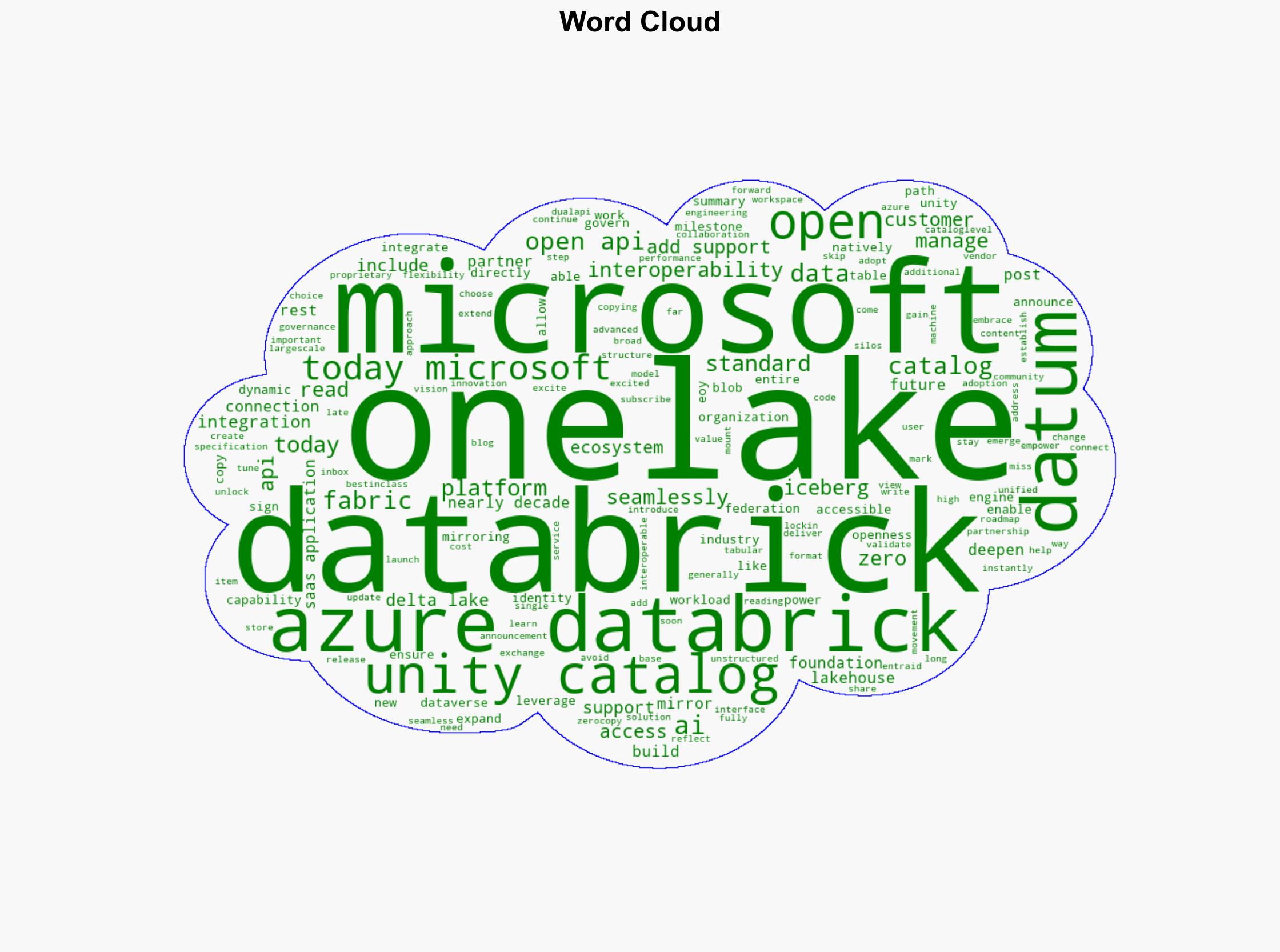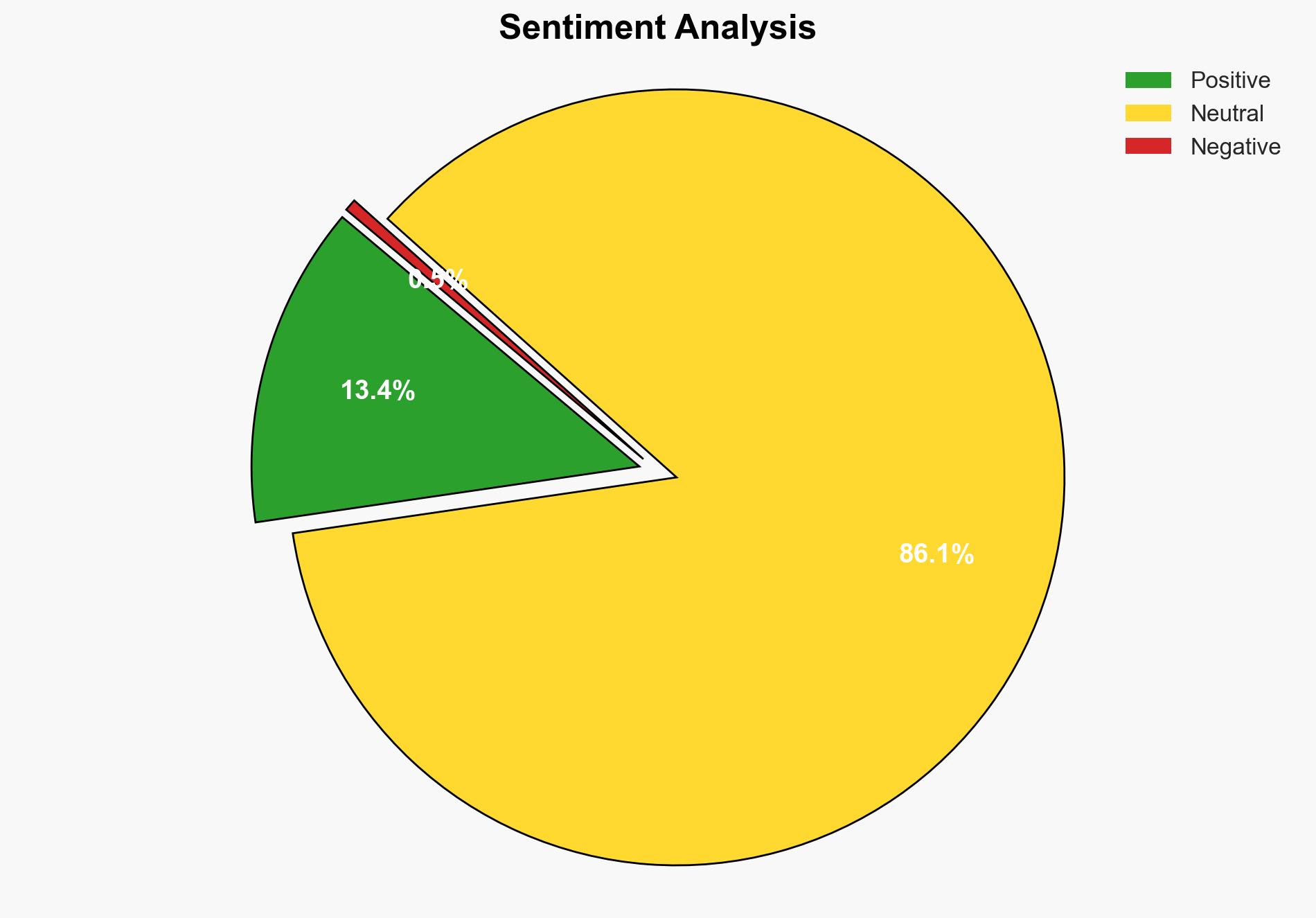Expanding support for OneLake in Unity Catalog – Databricks.com
Published on: 2025-11-19
AI-powered OSINT brief from verified open sources. Automated NLP signal extraction with human verification. See our Methodology and Why WorldWideWatchers.
Intelligence Report: Expanding Support for OneLake in Unity Catalog – Databricks
1. BLUF (Bottom Line Up Front)
The integration of Microsoft OneLake with Databricks’ Unity Catalog represents a significant step towards enhanced data interoperability and governance. The most supported hypothesis is that this collaboration will strengthen Databricks’ position in the data management market by leveraging Microsoft’s ecosystem, thereby increasing customer adoption. Confidence Level: High. Recommended action is to monitor the integration’s impact on market dynamics and potential shifts in data governance standards.
2. Competing Hypotheses
Hypothesis 1: The integration will significantly enhance Databricks’ market position by providing seamless access to Microsoft’s data ecosystem, attracting more enterprise customers.
Hypothesis 2: The integration may face challenges due to potential technical and operational hurdles, limiting its impact on Databricks’ market expansion.
Hypothesis 1 is more likely due to the strategic alignment between Databricks and Microsoft, both of which have a history of successful collaboration and a shared interest in promoting open standards.
3. Key Assumptions and Red Flags
Assumptions: The integration will proceed without significant technical issues, and both companies will continue to prioritize open standards.
Red Flags: Potential over-reliance on Microsoft’s ecosystem could lead to vendor lock-in, contrary to the stated goal of avoiding it.
Deception Indicators: None identified, but marketing language should be scrutinized for over-promising capabilities.
4. Implications and Strategic Risks
The integration could lead to a shift in data governance standards, influencing other industry players to adopt similar open standards. However, there is a risk of increased competition as other tech giants may respond with their own integrations or enhancements, potentially leading to a fragmented market. Cybersecurity risks may also arise from increased data interoperability.
5. Recommendations and Outlook
- Monitor the integration’s technical performance and customer feedback to identify any emerging issues early.
- Engage with industry stakeholders to promote the benefits of open standards and interoperability.
- Best-case scenario: The integration proceeds smoothly, leading to increased market share and influence over data governance standards.
- Worst-case scenario: Technical challenges and market fragmentation limit the integration’s impact, leading to missed opportunities.
- Most-likely scenario: The integration enhances Databricks’ market position, but requires ongoing adjustments to address technical and competitive challenges.
6. Key Individuals and Entities
Databricks, Microsoft, Azure, OneLake, Unity Catalog.
7. Thematic Tags
Cybersecurity, Data Interoperability, Open Standards, Data Governance, Cloud Integration
Structured Analytic Techniques Applied
- Adversarial Threat Simulation: Model and simulate actions of cyber adversaries to anticipate vulnerabilities and improve resilience.
- Indicators Development: Detect and monitor behavioral or technical anomalies across systems for early threat detection.
- Bayesian Scenario Modeling: Quantify uncertainty and predict cyberattack pathways using probabilistic inference.
Explore more:
Cybersecurity Briefs ·
Daily Summary ·
Support us





